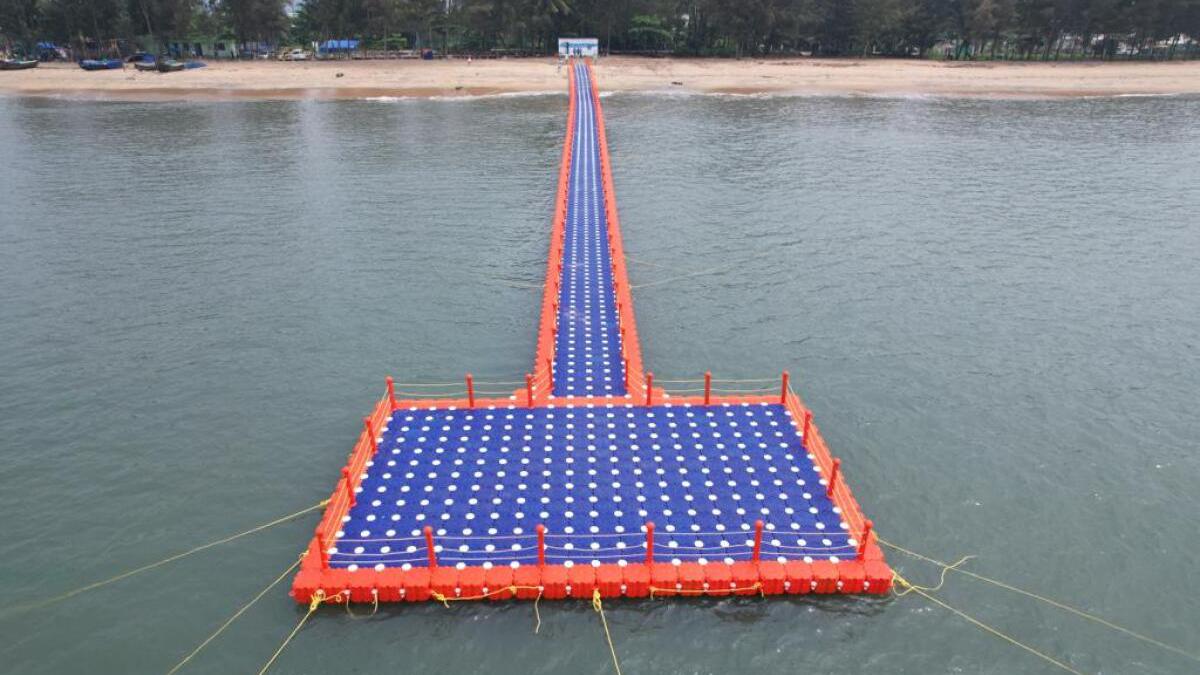
Kerala to tap beach tourism potential fully
The Hindu
Explore 580km of Kerala's coastline with its stunning seaside getaways, drive-in beach and water sports activities. Enjoy the floating bridge and more!
Kerala is set to utilise the tourism potential of its 580-km coastline dotted by some of the finest seaside getaways that includes Asia’s longest drive-in beach in Muzhappilangad.
Tourism Minister P.A. Mohamed Riyas said the State needed to realise the potential of beach tourism sufficiently. The government intends to move forward by linking tourist places along its vast seacoast spread across nine of its 14 districts.
Inaugurating the first floating bridge in the district at Papanasam Beach, the seventh in the state, the minister said they will add to the tourist attractions in these coastal districts.
“There is a huge potential for beach tourism in Kerala, and it will be utilised effectively,” he said. “Kerala’s coastline is ideal for water sports. But there are a few projects now. If effectively utilised, it will immensely contribute to the state’s revenues.”
He said many investors had come forward at the first Tourism Investors’ Meet held in the state capital last month, expressing their interest in investing in beach tourism.
Including these proposals, the minister said, the government intends to implement more beach tourism projects in public-private partnerships. A master plan has been formulated to comprehensively develop Varkala as a major entertainment and pilgrimage centre in the state to be implemented in 2024.
“New projects like the floating bridge in Varkala, which currently has many water sports activities, will attract more tourists here,” Mr. Riyas said. The floating bridge has been set up by the department of Tourism in association with the District Tourism Promotion Council, Kerala Adventure Tourism Promotion Society and the Municipality of Varkala.

“Writing, in general, is a very solitary process,” says Yauvanika Chopra, Associate Director at The New India Foundation (NIF), which, earlier this year, announced the 12th edition of its NIF Book Fellowships for research and scholarship about Indian history after Independence. While authors, in general, are built for it, it can still get very lonely, says Chopra, pointing out that the fellowship’s community support is as valuable as the monetary benefits it offers. “There is a solid community of NIF fellows, trustees, language experts, jury members, all of whom are incredibly competent,” she says. “They really help make authors feel supported from manuscript to publication, so you never feel like you’re struggling through isolation.”

Several principals of government and private schools in Delhi on Tuesday said the Directorate of Education (DoE) circular from a day earlier, directing schools to conduct classes in ‘hybrid’ mode, had caused confusion regarding day-to-day operations as they did not know how many students would return to school from Wednesday and how would teachers instruct in two modes — online and in person — at once. The DoE circular on Monday had also stated that the option to “exercise online mode of education, wherever available, shall vest with the students and their guardians”. Several schoolteachers also expressed confusion regarding the DoE order. A government schoolteacher said he was unsure of how to cope with the resumption of physical classes, given that the order directing government offices to ensure that 50% of the employees work from home is still in place. On Monday, the Commission for Air Quality Management in the National Capital Region and Adjoining Areas (CAQM) had, on the orders of the Supreme Court, directed schools in Delhi-NCR to shift classes to the hybrid mode, following which the DoE had issued the circular. The court had urged the Centre’s pollution watchdog to consider restarting physical classes due to many students missing out on the mid-day meals and lacking the necessary means to attend classes online. The CAQM had, on November 20, asked schools in Delhi-NCR to shift to the online mode of teaching.









